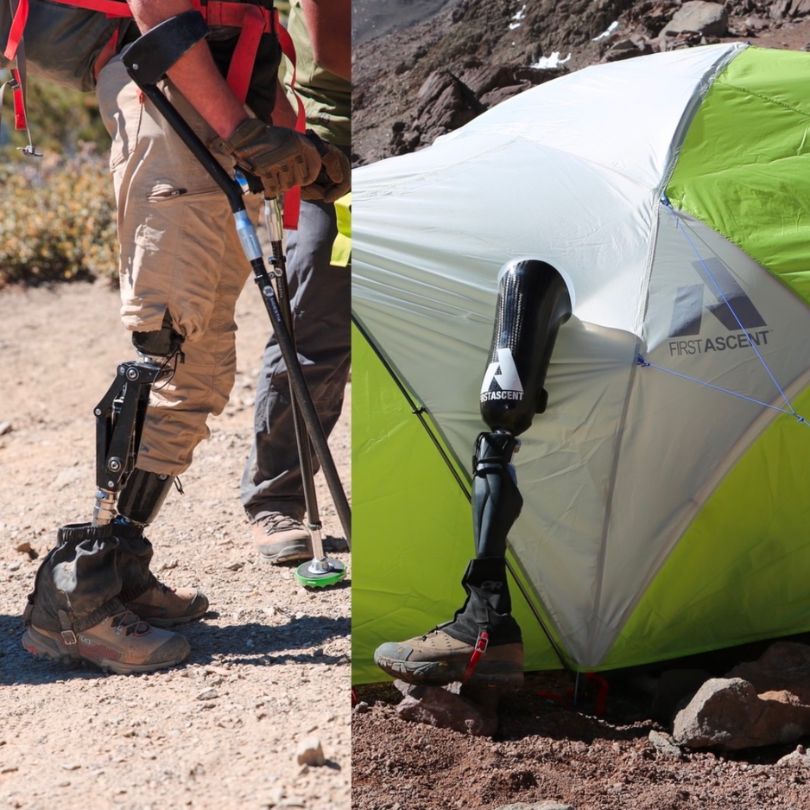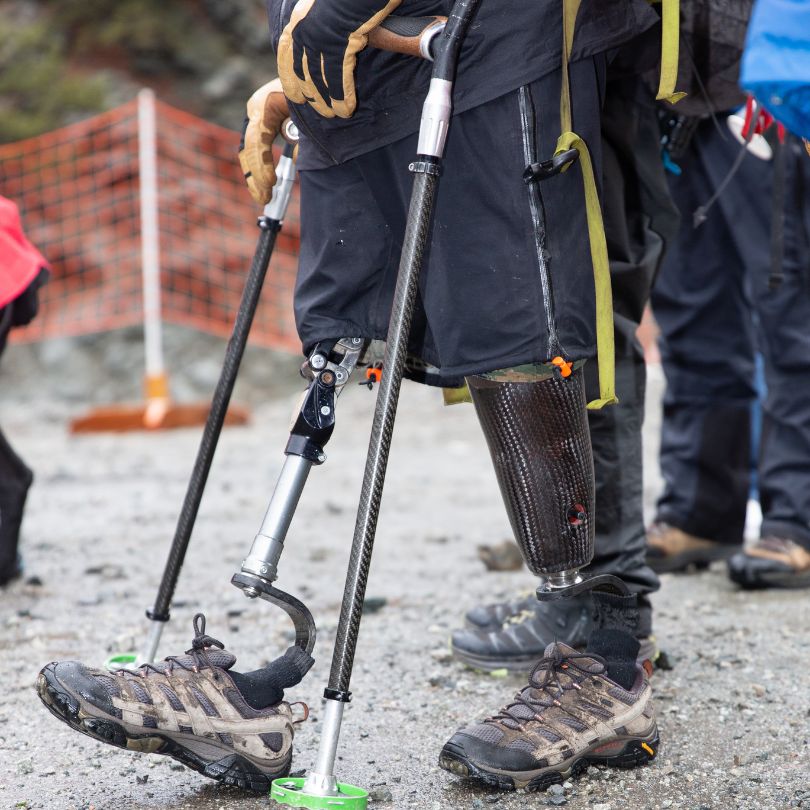Prosthetics have come a long way from the wooden pegs and hooks of the past. Modern technology allows for advanced, highly functional prosthetic limbs that can significantly enhance the quality of life for users.
In the early days of The Heroes Project, as we helped veterans conquer the world's highest summits, we faced unique challenges with prosthetic technology. Back then, many above-the-knee prosthetics relied on battery power, featuring different modes such as downhill, uphill, and even hydraulic functions. This made batteries an essential part of the journey—but also a significant risk. If the batteries died, especially when we were deep on a trail far from civilization, there was no outlet to recharge them.
So, how did we manage? Solar panels became our lifeline. While battery life was limited and unpredictable, the panels provided a solution—at least as long as the sun was shining. Of course, bad weather posed its own difficulties, and storms could leave us unable to charge the devices. It was a constant battle of adapting to the technology of the time and overcoming obstacles.
Fast forward 15 years, and the landscape has undergone a remarkable transformation. Today, cutting-edge battery and prosthetic technologies are more reliable and efficient than ever before, with some batteries lasting nearly 30 days on a single charge. It’s incredible to see how innovation has progressed, making the seemingly impossible now within reach for our veterans.


Here we go!
Myth 1: Prosthetics Make People “Superhuman”
One of the most enduring myths is that prosthetic limbs can turn people into superhumans with extraordinary abilities. While advancements in prosthetic technology can greatly improve mobility and function, they do not grant superhuman strength or capabilities. Prosthetics are designed to help individuals regain independence and perform everyday tasks, not to enhance their natural abilities beyond human limits.
Myth 2: Prosthetics Are One-Size-Fits-All
Another common misconception is that prosthetics are one-size-fits-all solutions. In reality, prosthetics are highly personalized devices, custom-made to fit the unique needs, preferences, and anatomy of each individual. The process of getting a prosthetic limb involves careful measurement, fitting, and adjustment to ensure the best possible fit and function.
-4.jpg)
Myth 3: Prosthetics Are Uncomfortable and Painful
Many people believe that wearing a prosthetic limb is always uncomfortable and painful. While it is true that some individuals may experience discomfort, modern prosthetics are designed with comfort in mind. Advances in materials and fit techniques have significantly reduced discomfort, and most users find their prosthetics to be comfortable and functional with proper adjustments and care.
Myth 4: Prosthetics Are Only for the Young and Active
There's a misconception that prosthetics are primarily for young, active individuals. In reality, prosthetics can benefit people of all ages and activity levels. Whether an individual wants to run a marathon, play with their grandchildren, or simply maintain their independence in daily life, prosthetics can be tailored to meet a wide range of needs and goals.
Prosthetic devices have become a key resource in improving the lives of veteran amputees. With over a quarter of veterans in the United States living with disabilities, the demand for prosthetics.
Myth 5: Prosthetics Are Easily Noticeable
Some people worry that prosthetic limbs will be highly noticeable and draw unwanted attention. Modern prosthetics are designed to look and feel as natural as possible. Many prosthetics are made with lifelike materials and colors that blend seamlessly with the user's body. Additionally, users can choose from a variety of cosmetic options to customize the appearance of their prosthetic limb.
-5.jpg)
Did you learn something new and interesting? Hopefully, you did.
Prosthetics have the potential to greatly enhance the quality of life for individuals who need them, but it's important to separate fact from fiction. By debunking these common myths, we hope to provide a clearer understanding of what prosthetics can and cannot do. Remember, each individual's experience with a prosthetic limb is unique, and the journey to finding the right prosthetic is a personal one.
Whether you or someone you know is considering a prosthetic limb, it's essential to seek information from reputable sources and consult with healthcare professionals to make informed decisions. Prosthetics are not a one-size-fits-all solution, but with the right approach, they can be a valuable tool for regaining independence and improving overall well-being.
The Heroes Project is passionately committed to empowering the injured veteran community through transformative, nature-based programs. We firmly believe in the power of the outdoors and are eager to share this healing experience with our veteran community.
To discover more about our impactful initiatives, please visit our website here. And if you'd like to join us in our mission, consider donating today to help create hope and opportunities for those who have served.
Together, we're paving the way for a brighter future for those who have served us. Join us in honoring their sacrifice and ensuring they receive the support they deserve.
Get ready for exciting updates and exclusive behind-the-scenes glimpses of the upcoming Veteran Retreat Center! Subscribe now to stay connected and discover meaningful ways to get involved. Together, we can create something extraordinary and make a lasting impact. ❤️🇺🇸 Let's do this!



-6.jpg)

